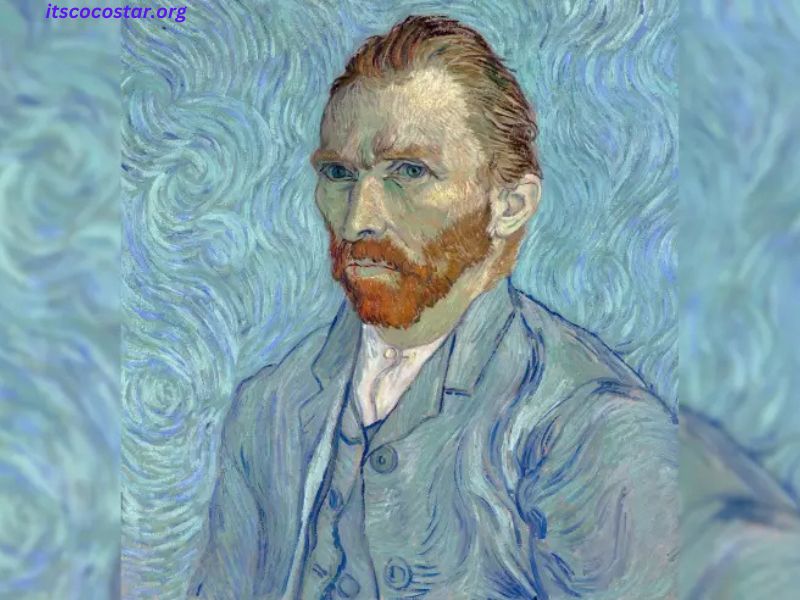Vincent van Gogh, one of the most celebrated painters in history, left behind a legacy of vibrant works that have captivated art lovers for generations. However, beyond his artistic genius lies a life marked by intense emotional turmoil, mental illness, and physical ailments. Among the many questions surrounding his health, one particularly intriguing query persists: Did Van Gogh have spontaneous seizures?
A Brief Overview of Van Gogh’s Life
Van Gogh was born in 1853 in the Netherlands and is best known for his bold, post-Impressionist style. His works, including Starry Night, Sunflowers, and The Bedroom, are renowned for their emotive power and unique use of color. Despite his artistic brilliance, Van Gogh struggled with poverty, rejection, and mental health issues throughout his life. His career was tragically short—he died at the age of 37, under circumstances that remain the subject of debate.
Van Gogh’s health challenges were well-documented in his letters to his brother, Theo, and by those who knew him. Reports of erratic behavior, depressive episodes, and physical illnesses have fueled speculation about the nature of his ailments. Among these, the possibility of epilepsy and spontaneous seizures has drawn significant attention from historians, medical experts, and art enthusiasts.
The Evidence for Epilepsy and Seizures
Observations of Symptoms
Van Gogh exhibited symptoms that align with epilepsy, a neurological disorder characterized by recurrent seizures. Accounts of his behavior suggest he experienced sudden episodes of altered consciousness, hallucinations, and physical agitation. These episodes were often followed by periods of extreme fatigue, confusion, or depression, which are consistent with postictal states observed in epilepsy patients.
The Role of Alcohol and Absinthe
Van Gogh’s lifestyle may have exacerbated his condition. He was known to consume large quantities of alcohol, particularly absinthe, a popular but controversial drink in 19th-century Europe. Absinthe contains thujone, a chemical compound that, in high doses, can cause neurotoxic effects and potentially trigger seizures. It is possible that Van Gogh’s heavy drinking contributed to or amplified his neurological symptoms.
Temporal Lobe Epilepsy Hypothesis
Some medical historians have speculated that Van Gogh suffered from temporal lobe epilepsy, a condition that can cause seizures involving intense emotional and sensory experiences. Temporal lobe epilepsy might explain the vivid hallucinations and altered perceptions Van Gogh described in his letters. For example, he once wrote to Theo about hearing voices and experiencing visions that inspired his art.
Alternative Explanations for His Symptoms
While epilepsy remains a plausible explanation, other theories have been proposed to account for Van Gogh’s symptoms. These include:
Bipolar Disorder
Some researchers argue that Van Gogh’s behavior aligns more closely with bipolar disorder, a mental health condition characterized by extreme mood swings. His periods of intense creativity often coincided with manic episodes, while his depressive phases were marked by despair and suicidal ideation. Although bipolar disorder does not typically involve seizures, it could account for many of his symptoms.
Lead Poisoning
Van Gogh’s use of lead-based paints may have contributed to his health problems. Chronic lead poisoning can cause neurological symptoms such as headaches, irritability, and seizures. Given the toxic nature of the materials he worked with, it is conceivable that prolonged exposure affected his physical and mental health.
Porphyria
Another theory is that Van Gogh suffered from porphyria, a rare genetic disorder that affects the production of heme, a component of hemoglobin. Porphyria can cause a range of symptoms, including abdominal pain, psychiatric disturbances, and seizures. Some researchers have linked this condition to Van Gogh’s intermittent episodes of illness.
Meniere’s Disease
Meniere’s disease, a disorder of the inner ear, has also been suggested as a potential cause of Van Gogh’s symptoms. This condition can lead to vertigo, tinnitus, and hearing loss, as well as episodes of disorientation that might resemble seizures.
The Infamous Ear Incident
One of the most dramatic events in Van Gogh’s life—the severing of his own ear—has fueled speculation about his mental and physical health. This act of self-mutilation occurred during a tumultuous period in 1888 when he lived in Arles, France, and shared a studio with fellow artist Paul Gauguin. The incident has been interpreted as evidence of a severe mental breakdown, possibly linked to a seizure or psychotic episode.
Some historians believe that Van Gogh’s ear injury was the culmination of a seizure, during which he lost control of his actions. Others suggest it was a deliberate act driven by emotional distress, exacerbated by his strained relationship with Gauguin. While the exact cause remains unclear, the event underscores the severity of Van Gogh’s struggles.
Diagnosing Van Gogh: Challenges and Controversies
Diagnosing historical figures is inherently speculative, as it relies on limited records and anecdotal evidence. In Van Gogh’s case, the lack of direct medical documentation makes it difficult to confirm any single diagnosis. Additionally, his symptoms were likely influenced by a combination of factors, including genetic predisposition, environmental stressors, and substance use.
Theories about Van Gogh’s health continue to evolve as new research emerges. Modern imaging techniques, for example, have provided insights into the effects of temporal lobe epilepsy on the brain, offering a potential framework for understanding his experiences. However, without access to Van Gogh’s medical history or the ability to conduct tests, definitive answers remain elusive.
How Seizures May Have Influenced His Art
If Van Gogh did experience seizures, they may have shaped his artistic vision. Some researchers believe that the heightened sensory awareness and emotional intensity associated with temporal lobe epilepsy could explain the unique qualities of his work. His swirling brushstrokes, vivid colors, and dynamic compositions suggest a heightened perception of the world, which may have been influenced by his neurological condition.
Van Gogh himself acknowledged the connection between his struggles and his creativity. In a letter to Theo, he wrote: “I put my heart and soul into my work, and I have lost my mind in the process.” This poignant statement reflects the complex interplay between his artistic passion and personal suffering.
The Legacy of Van Gogh’s Health
Van Gogh’s life and work continue to inspire discussions about the relationship between creativity and mental health. His story highlights the importance of understanding and supporting individuals with neurological and psychiatric conditions. It also underscores the need for compassion in addressing the challenges faced by those who, like Van Gogh, struggle to navigate the complexities of their minds.
Conclusion
Did Van Gogh have spontaneous seizures? The evidence suggests it is a strong possibility, given his symptoms and the accounts of those who knew him. However, alternative explanations such as bipolar disorder, lead poisoning, and other medical conditions cannot be ruled out. What remains clear is that Van Gogh’s health challenges profoundly influenced his life and art, leaving an indelible mark on the world.
Understanding Van Gogh’s struggles provides a deeper appreciation for his resilience and creativity. Whether or not seizures were part of his experience, they offer a window into the complex interplay of health, art, and human experience. As we continue to explore his legacy, Van Gogh remains a testament to the enduring power of creativity in the face of adversity.






